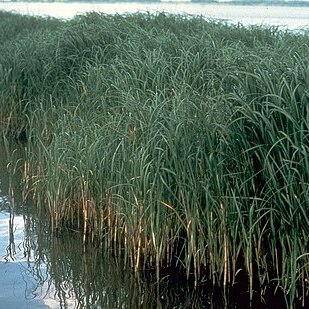Perennials, caespitose, rhizomatous (in Australia), stoloniferous or not, bisexual. Leaves: ligule a fringe of hairs; blade often disarticulating from the sheaths (not in Australia), rolled in bud. Inflorescence a panicle with 2–many long or short spikes, borne racemosely on the rachis, with spikelets secundly arranged; branches dorsiventral, triquetrous, not ending in spikelets (their slender, naked tips often prolonged), persistent. Spikelets sessile, strongly laterally compressed, with 1 (rarely 2) bisexual floret(s), falling with the glumes; rachilla terminating at the bisexual floret. Glumes 2, very unequal, exceeding the florets, shortly awned (not in Australia) or awnless; lower glume 1-nerved; upper glume longer than lower, 1–6-nerved. Lemmas awnless, carinate, 1–3-nerved. Lodicules absent. Hilum short.
Spikelets 1-fld, strongly flattened, articulated below the glumes, closely or loosely imbricate in 2 rows on 2 sides of a triangular rachis; glumes unequal, narrow, 1-veined, acute, acuminate, or awned, the second (exterior in the spike) exceeding the lemma; lemma firm, keeled, awnless, obscurely veined; palea equaling or usually exceeding the lemma; perennial, usually colonial from stout, scaly rhizomes, with a few to many dense, one-sided spikes appressed to spreading along a common axis; ligule a band of hairs; good seed only sparingly produced. 15, New World and w. Europe and Afr.

